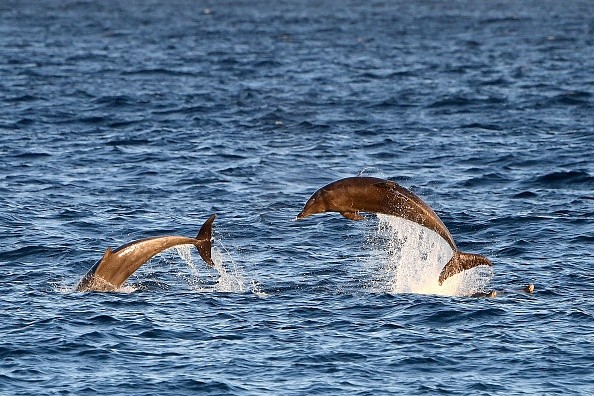In 2018, during the time lifeless Fraser's dolphin washed up in a state in Hawaii , researchers did not have any suspicion that the event could be the initial sign of a dangerous outbreak.
But a paper released in Scientific Reports on the 9th of August discloses that the dolphin was infected with a formerly unidentified strain of morbillivirus.
This disease is related to human smallpox and measles that has taken the lives of great numbers of cetaceans including dolphins, whales, and porpoises all over the world.

Kristi West, University of Hawaii at Mānoa's Hawaiʻi Institute of Marine Biology's associate researcher and also the study lead author told EcoWatch in an email: "This finding identifies an important threat to Fraser's dolphins and to the approximately 20 other species of cetaceans that call Hawaii home."
This airborne virus - cetacean morbillivirus - is capable of spreading very fast between very social species such as dolphins and whales. This virus can also spread between various whale and dolphin species and also between a pregnant mother and her young.
For instance, 2013 and 2014 outbreaks led to a mass death event, killing over 1,500 bottlenose dolphins along the United States East Coast.
Threat of Extinction
This is mostly an issue if other things are already threatening a species or population, Nicola Hodgins, Whale and Dolphins Conservation policy manager who was not part of the research, revealed this to EcoWatch in an email.
She wrote that it is has been revealed that morbillivirus spread rapidly through populations - mostly as cetaceans are very social and move in large groups and for this reason, if it were to spread through a species that was already classified as susceptible it could bring about devastating impact.
The study authors noted that in the case of the waters off Hawaii, this is an actual risk. Because the islands harbor many distinct populations that are not many in number. For instance, the endangered Hawaiian false killer whales (Pseudorca crassidens) is just about 167 in number.
"Novel disease is considered a major hurdle to endangered population recovery and even poses the threat of extinction," the study authors wrote.

Unique Hawaiian Species
Additionally, there is proof that the populations of Spinner dolphins (Stenella longirostris longirostris), Spotted dolphins (Stenella attenuata), Cuvier's beaked whales (Ziphius cavirostris), pilot whales, Blainville's beaked whales (Mesoplodon densirostris), pygmy killer whales (Feresa attenuata), bottlenose dolphins (Tursiops truncatus), and Melon-headed whales (Peponocephala electra) from Hawaii are unique.
Also, outbreaks of diseases in the Hawaiian Islands are hard to study. The reason for this is that scientists are able to get back less than five percent of the animals that lost their lives in these waters, this means that scientists might not even be aware an outbreak is happening.
University of Hawaii press release advised that one way individuals can assist scientists in getting more knowledge about Hawaii's dolphins and whales is by giving reports of any strandings to the state's NOAA Marine Wildlife Hotline - 1(888) 256-9840.
Related Article: New Species Alert? Rare Dolphin-Whale Hybrid Spotted In Hawaii
For more news, updates about viruses and similar topics don't forget to follow Nature World News!
© 2025 NatureWorldNews.com All rights reserved. Do not reproduce without permission.





